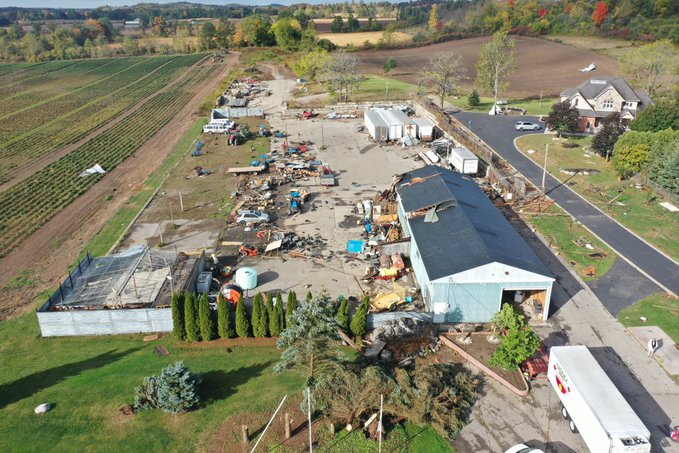A tornado is getting the blame for wreaking havoc in rural Hamilton this week.

Environment Canada has confirmed that an EF1 tornado touched down for a few minutes in the area of Brock and Safari roads in Flamborough at about 4:30 p.m. Wednesday, with winds of 150 kilometres per hour.
Photos posted on social media show trees uprooted and snapped in half, roofs ripped off buildings, and even a transport truck blown onto its side.
No one was reported injured in the storm.
Dr. David Sills, executive director of Western University’s Northern Tornadoes Project (NTP) says there have been 32 tornadoes in southern Ontario this year — most of them similar in strength to this one.
“It wasn’t the kind of tornado where the thunderstorm is rotating — a supercell thunderstorm that you can see on radar, that there could be a tornado there. It was more of what we call a landspout tornado, where there’s rotation already near the ground, and then the thunderstorm updraft strengthens that, and intensifies the rotation up to tornado strength.”
While the NTP has only been tracking tornadoes in Canada since it was formed in 2017, Sills said they’re learning more about which areas of the country are seeing the most tornado activity.
In 2018 and 2019, Quebec saw the majority of Canada’s tornados, while this year, southern Ontario seems to be the hot spot.
Sills said climate change isn’t necessarily affecting how many tornadoes occur each year, but that it could be changing the “character” of the storms.
That means that there might be fewer days with tornadoes, but on days when they occur, there could be more “outbreaks.”
“We have seen evidence that the timing of the tornadoes — when they occurred during the year — is drifting to later in the year. Typically, in some parts of Canada, the maximum is in June or July. And in southern Ontario, we’ve seen it drifting into August.”







Comments